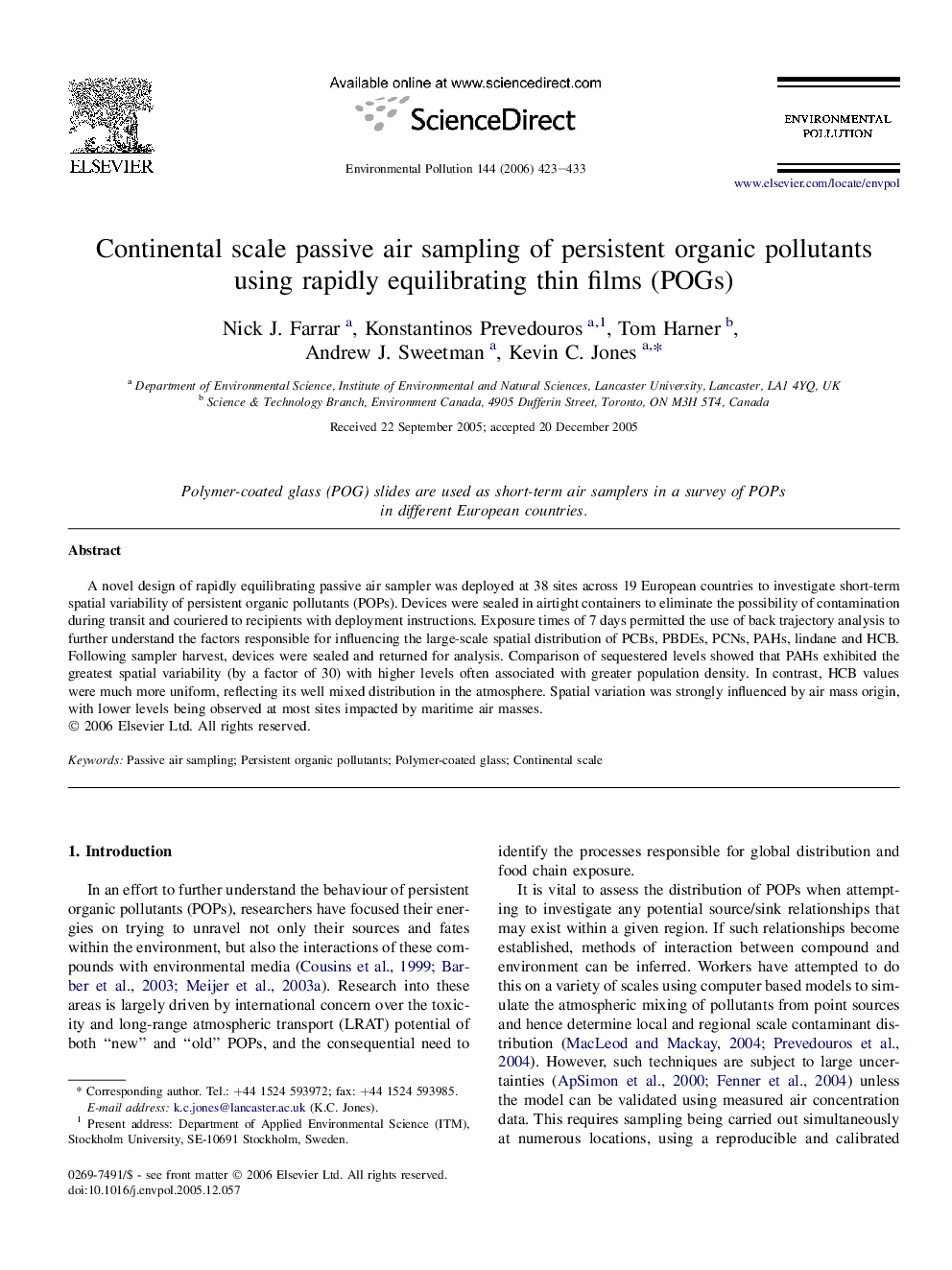| Article ID | Journal | Published Year | Pages | File Type |
|---|---|---|---|---|
| 4427764 | Environmental Pollution | 2006 | 11 Pages |
Abstract
A novel design of rapidly equilibrating passive air sampler was deployed at 38 sites across 19 European countries to investigate short-term spatial variability of persistent organic pollutants (POPs). Devices were sealed in airtight containers to eliminate the possibility of contamination during transit and couriered to recipients with deployment instructions. Exposure times of 7Â days permitted the use of back trajectory analysis to further understand the factors responsible for influencing the large-scale spatial distribution of PCBs, PBDEs, PCNs, PAHs, lindane and HCB. Following sampler harvest, devices were sealed and returned for analysis. Comparison of sequestered levels showed that PAHs exhibited the greatest spatial variability (by a factor of 30) with higher levels often associated with greater population density. In contrast, HCB values were much more uniform, reflecting its well mixed distribution in the atmosphere. Spatial variation was strongly influenced by air mass origin, with lower levels being observed at most sites impacted by maritime air masses.
Related Topics
Life Sciences
Environmental Science
Environmental Chemistry
Authors
Nick J. Farrar, Konstantinos Prevedouros, Tom Harner, Andrew J. Sweetman, Kevin C. Jones,
